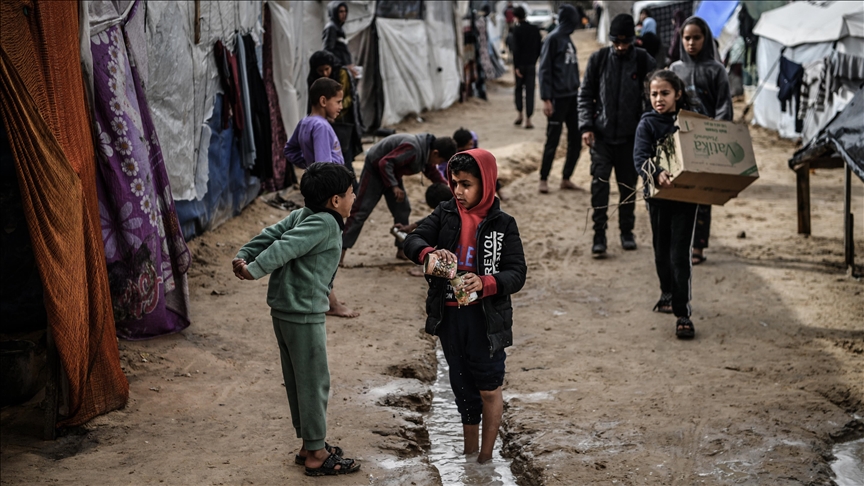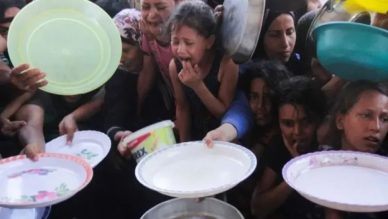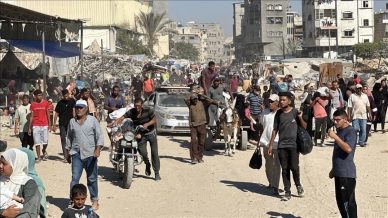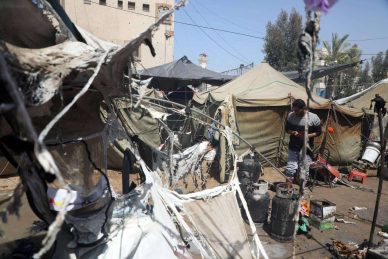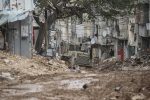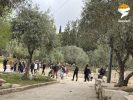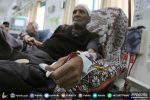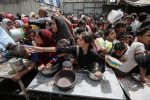GAZA, (PIC)
Since returning from southern Gaza after a ceasefire was implemented, 13-year-old Mohammad Al-Sheikh found his home in Beit Hanoun reduced to rubble—and decided to start searching for work.
His mother says, “After his father was killed in April 2024 by a bullet fired from a quadcopter drone, Mohammad became the man of the house.”
Mohammad has three younger siblings, all of whom are trying to continue their education online or through local initiatives in tents. But Mohammad cannot join them, as he spends the entire day working outside.
“I go out at six in the morning, looking for people trying to clear the rubble of their homes. I offer my help, and if they agree, they pay me 10 shekels a day,” he says.
His day ends at 5 p.m., and although the work carries risks—especially for a child—Mohammad tries not to think about that, as he focuses on putting food on the table.
“If I don’t work, my siblings won’t eat. Prices have skyrocketed since the Israeli occupation closed the crossing, and with what I earn, I can at least bring back bread,” he adds.
Under normal circumstances, Mohammad would be a school student. But the ongoing war has forced children into a daily fight for survival. Despite emergency education programs by the Ministry of Education and UNRWA, many students have been pushed into labor amid the ruins of homes and infrastructure.
According to his mother, Mohammad returns from work every day completely exhausted. He throws himself onto the mattress in the tent his family erected over the ruins of their home and sleeps until dawn.
“I barely see or hear him,” she adds. “My heart breaks for him, but we have no other choice. If my children were older, I would go out to work myself—but they still need care.”
A missing father and a life on the edge
In Jabalia, 9-year-old Maysoon Mazen is trying to earn a little money for herself and her siblings by making beaded bracelets.
She says, “The Israeli planes bombed our home, and the only thing I managed to pull from under the rubble was a box of beads my mom gave me as a birthday gift before the war.”
Maysoon’s father is missing—her family doesn’t know if he was martyred during the Israeli attacks or if he’s being held in an Israeli prison. “My mom provides our food with help from her family and some aid. We can’t even ask for pocket money to buy a piece of candy.”
Each morning, Maysoon lays out the bracelets she makes on a cloth and calls out to other little girls to buy from her.
“Sometimes they buy, but other times their moms refuse, saying household needs come first,” she says.
At best, she sells two bracelets or necklaces a day, earning no more than 10 shekels total. “And sometimes I sell nothing at all,” she adds.
Maysoon, who no longer regularly attends classes, only reviews material before exams. She longs for the days before the war, “When Dad used to bring us sweets after work, and Mom would cook the tastiest meals in our warm home,” she says.
Not just passing victims
The Israeli war on Gaza has fueled a growing trend of child labor, with children suddenly thrust into adult roles—carrying heavy water jugs, competing in long lines for charity food, or seeking any kind of work amid the ruins of homes and the absence of providers.
According to psychologist and social worker Laila Ali, the psychological and social effects of child labor during wartime are deep and complex, requiring multidimensional analysis.
She notes that children of war suffer repeated psychological trauma—violence, loss, displacement—crippling their ability to process emotions healthily. This can result in PTSD (Post-traumatic stress disorder), anxiety, depression, or dissociation.
She also points out that emotional development is stunted when a child is forced into labor, depriving them of essential emotional experiences like play and parental bonding. This delays the development of empathy, trust, and emotional regulation.
A third factor, she adds, is the distortion of self-identity: children who take on the role of family breadwinner often lose touch with their sense of self-worth, develop guilt or helplessness, and become desensitized to violence—either turning aggressive or emotionally shutting down as a defense.
Socially, Laila highlights that losing access to education is the most harmful consequence. It limits children’s futures, perpetuates poverty, and leaves them vulnerable to exploitation. She also warns that children could be manipulated—intentionally or indirectly—into collaborating with occupying forces.
These children, she explains, suffer psychological and nervous strain due to long hours of work and poor nutrition, making them prone to illness or collapse. Balancing work and school become nearly impossible, causing constant stress over what they’re missing and cannot attain.
Laila emphasizes, “Children in war are not just passing victims—they are the most fragile core of society’s future. The consequences of their labor today will affect their stability and ability to contribute positively as adults.”
She calls on child welfare organizations and the Palestinian government to prioritize child labor as a key issue. “If we don’t act now, we may face a crisis too difficult to contain. This is for the sake of our children,” she says.
Shocking numbers
According to the Ministry of Education and Higher Education, 14,784 students have been martyred and 24,766 injured since the beginning of the genocide in Gaza and the West Bank on October 7, 2023.
In a statement issued Tuesday, the ministry said that over 14,649 students were killed in Gaza alone, with 23,936 injured. In the West Bank, 135 students were killed, 830 injured, and 724 arrested.
It also reported that 880 teachers and administrative staff were martyred, 4,247 injured in Gaza and the West Bank, and more than 193 arrested in the West Bank.
Data from the Palestinian Central Bureau of Statistics indicates that around 80,568 university and college students in Gaza have been unable to attend classes. Only a few institutions have recently resumed limited online learning.
Additionally, approximately 620,000 school students have been unable to attend classes, according to the Ministry of Education. Many describe their future as “unknown” due to the ongoing war.
According to the latest data from the Government Media Office, the Israeli army has completely destroyed 122 schools and universities and partially damaged 334 more.
With US support, Israel has been committing acts of genocide in Gaza since October 7, 2023, resulting in more than 169,000 Palestinians killed or injured—most of them women and children—along with over 11,000 missing persons and massive destruction of infrastructure.

